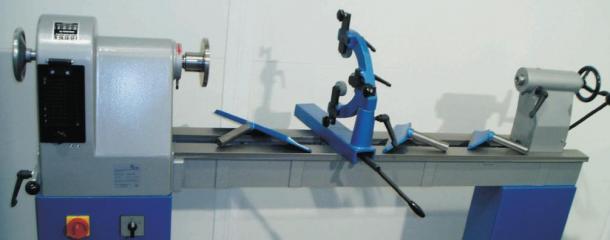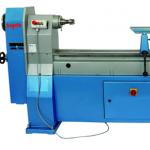LatheMachine for the production and processing of rotationally symmetrical components ("turned parts"), e.g. chair and table legs. The terms turning lathe and lathe or lathe machine are used synonymously in woodworking. Technically speaking, the general term "turning" also covers metalworking, metal processing "turning" always processing to the processing of wood. Mode of operationThe workpiece is fixed horizontal in the machine, between the headstock and - with double-sided clamping - the tailstock. For long workpieces, additional support is provided by a steady rest to the mission. The workpiece rotates and is now machined symmetrically to the rotation axis through tool feed a tool. The tool is held by:
The machining dimensions of lathes are given as:
Lathes can be equipped with further processing units, e.g. for boring, milling, Fluting or sanding. Related types of MachinesDepending on tool feed, workpiece clamping and special functions, miscellaneous types of lathes are distinguished:
|
CNC machining centres, robots894
Edgebanding, edge processing627
Saws, cutting machines436
Planers, 4-sided moulders186
Routers, shapers, tenoners, profilers181
Drilling, mortising machines134
Presses, clamps, joining machines201
Sanding machines320
Mechanisation, storage, packing technology199
Surface coating152
Production lines127
Heating, drying, waste chopping63
Dust extraction, compressed air, vacuum140
Assembly, worktables15
Lathes29
Tools, sharpening technology91
Equipment, Other machines131



























